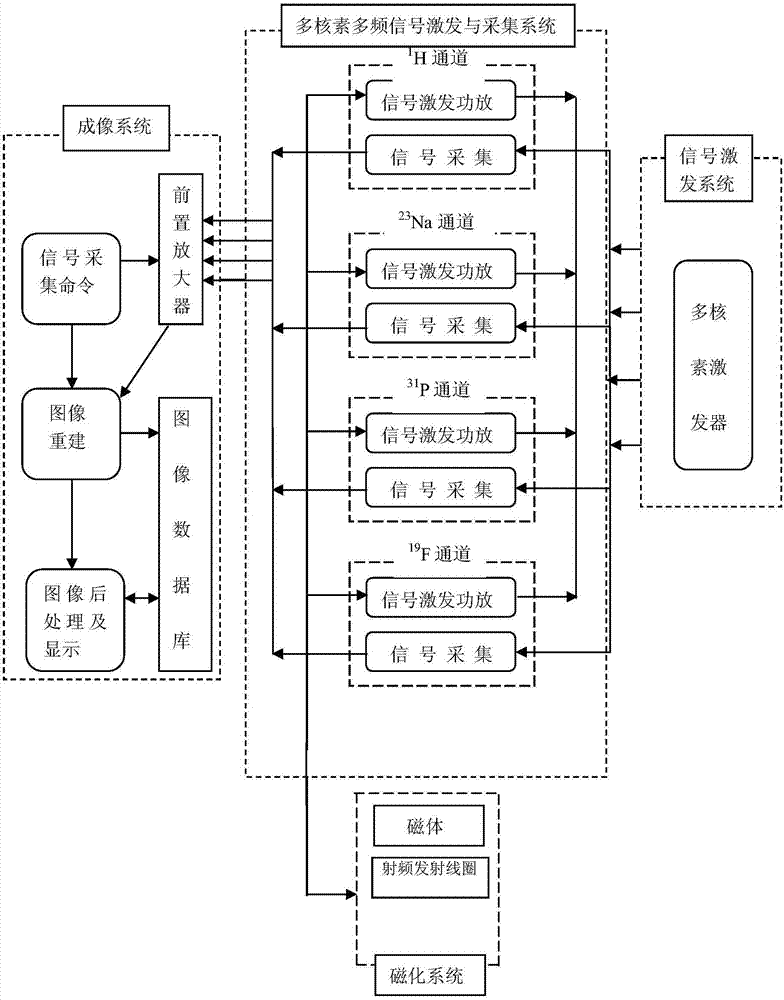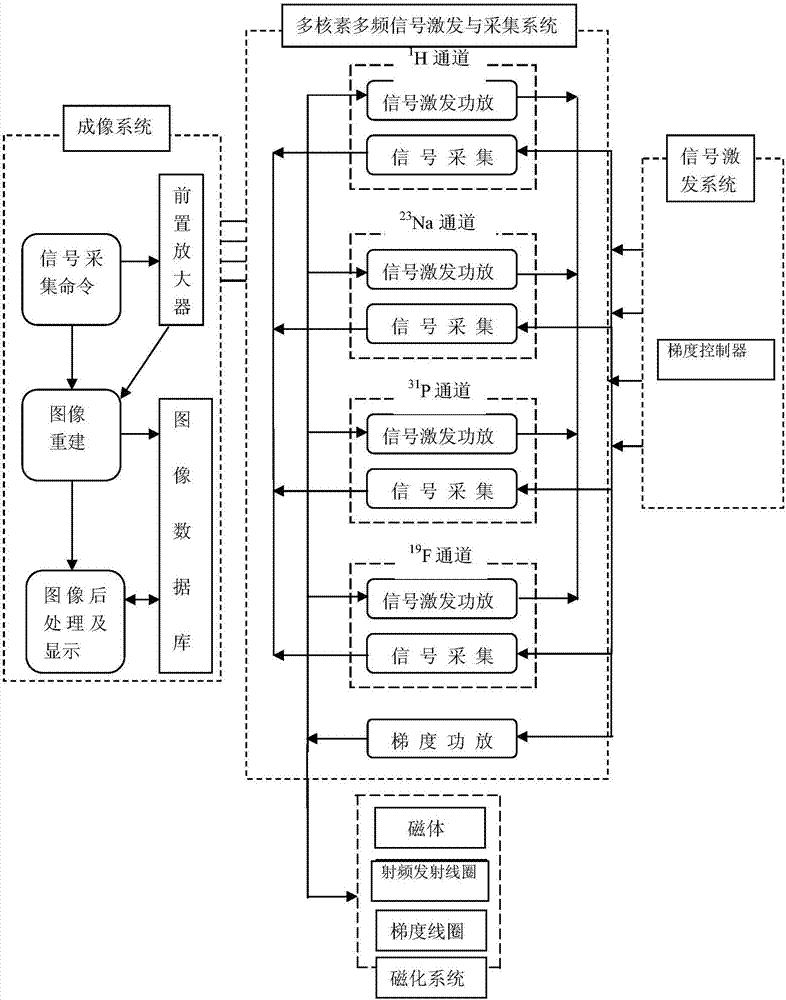Multi-nuclide multi-frequency resonance synchronous imaging system
A technology for simultaneous imaging and imaging systems, applied in the field of imaging systems, can solve the problems of lack of early targeted diagnosis, single information, and unclear pathogenesis.
- Summary
- Abstract
- Description
- Claims
- Application Information
AI Technical Summary
Problems solved by technology
Method used
Image
Examples
Embodiment Construction
[0022] The technical solutions in the embodiments of the present invention will be clearly and completely described below with reference to the accompanying drawings in the embodiments of the present invention. Obviously, the described embodiments are only a part of the embodiments of the present invention, rather than all the embodiments. Based on the embodiments of the present invention, all other embodiments obtained by those of ordinary skill in the art under the premise of not paying creative efforts shall fall within the protection scope of the present invention.
[0023] Magnetic resonance imaging (MRI) is to use radio frequency electromagnetic waves (pulse sequence) to excite substances containing non-zero spin nuclei placed in a static magnetic field to generate nuclear magnetic resonance, and use induction coil detection technology to obtain tissue relaxation information and The method and technology of nuclear density information (collecting resonance signal), using ...
PUM
 Login to View More
Login to View More Abstract
Description
Claims
Application Information
 Login to View More
Login to View More - R&D
- Intellectual Property
- Life Sciences
- Materials
- Tech Scout
- Unparalleled Data Quality
- Higher Quality Content
- 60% Fewer Hallucinations
Browse by: Latest US Patents, China's latest patents, Technical Efficacy Thesaurus, Application Domain, Technology Topic, Popular Technical Reports.
© 2025 PatSnap. All rights reserved.Legal|Privacy policy|Modern Slavery Act Transparency Statement|Sitemap|About US| Contact US: help@patsnap.com


